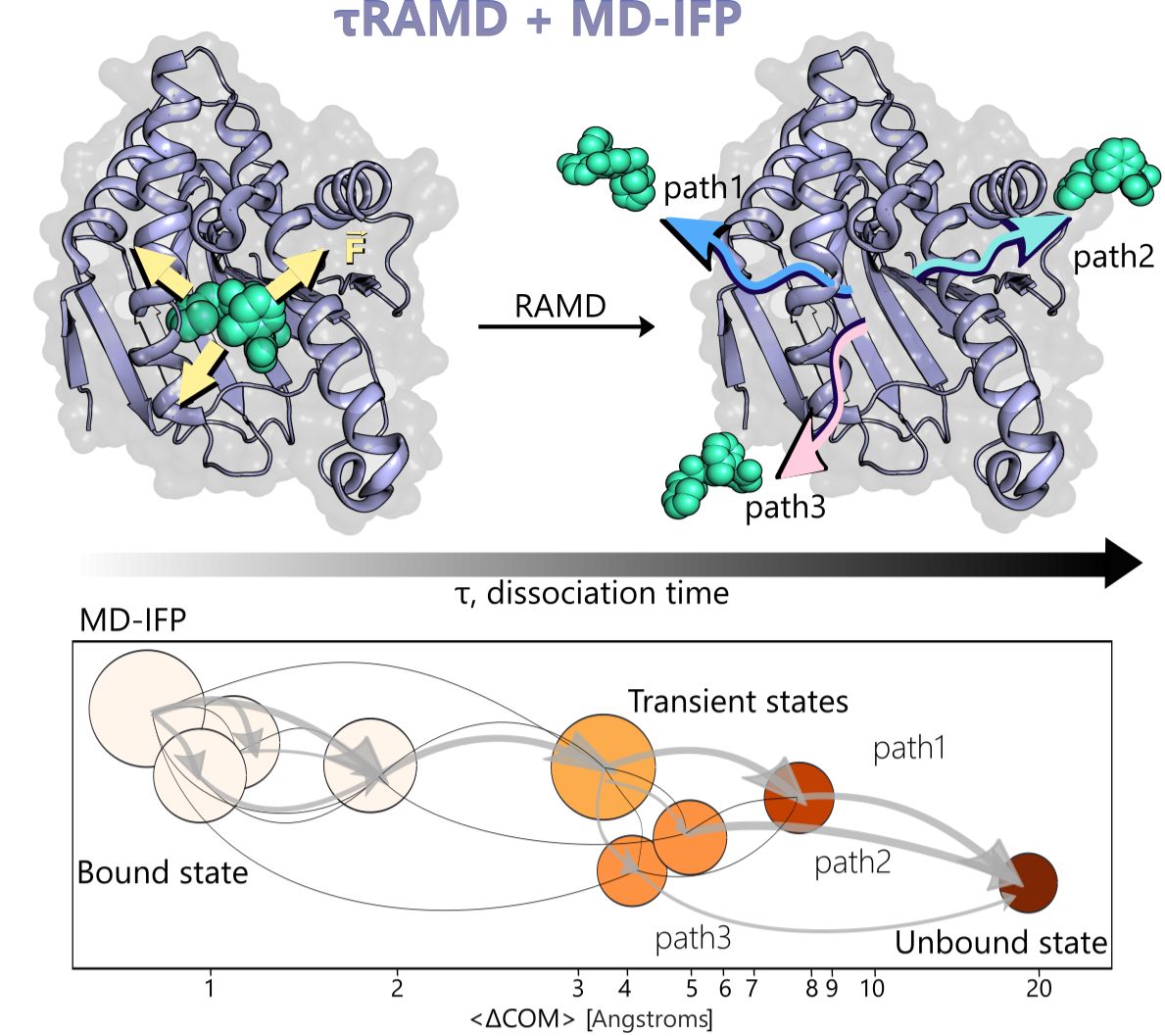τRAMD
Compute relative protein-ligand dissociation rates by efficient τRAMD simulation procedure.
τRAMD is a computationally efficient procedure that enables the computation of relative residence times (τ) or dissociation rates of protein-ligand complexes. It makes use of random acceleration molecular dynamics (RAMD) simulations to facilitate ligand egress in a short timescale and without imposing any bias regarding the ligand egress route. τRAMD is a powerful tool for ranking drug candidates according to their residence times and it can be used with the MD-IFP (Molecular Dynamics - Interaction Fingerprint) tool to investigate dissociation mechanisms and pathways. The combined use of τRAMD and MD-IFP may assist the design of new molecules or ligand optimization.
